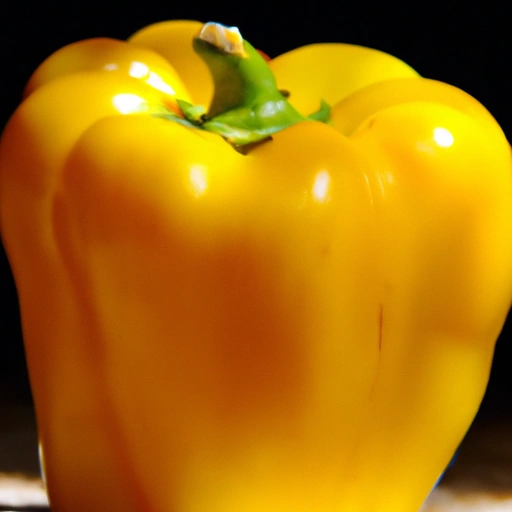Yellow Bell Pepper
Description

Yellow bell peppers are a vibrant and sweet variety of Capsicum annuum. Known for their glossy, sun-kissed skin and a shape resembling a bell, these peppers bring a pop of color and a mild, slightly fruity flavor to dishes. Unlike their green counterparts that are harvested earlier, yellow bell peppers are left on the vine to mature, leading to their characteristic color and sweeter taste.
Common uses
Yellow bell peppers are used in various culinary applications, from fresh salads and garnishes to cooked dishes like stir-fries, sauces, and stuffed peppers.
Nutritional value
Calories
A medium-sized yellow bell pepper (about 186 grams or 6.5 ounces) contains approximately 50 calories.
Protein
Yellow bell peppers provide about 1.9 grams of protein per medium-sized pepper.
Fat
This vegetable is low in fat, with only 0.4 grams per medium-sized pepper.
Carbohydrates
Carbohydrates content is around 11.8 grams for a medium-sized pepper, which includes 4 grams of dietary fiber and 7.2 grams of sugars.
Vitamins
Yellow bell peppers are a rich source of Vitamin C, providing about 341 milligrams or 569% of the recommended daily value (DV). They also contain Vitamin A, Vitamin E, and Vitamin K1.
Minerals
Minerals in yellow bell peppers include potassium, magnesium, and iron, with a medium pepper providing roughly 394 milligrams of potassium, 24 milligrams of magnesium, and 0.6 milligrams of iron.
Health benefits
Yellow bell peppers are known for their high Vitamin C content, which supports the immune system, and their antioxidants that help combat oxidative stress. Their fiber content promotes digestive health, while the various vitamins and minerals contribute to overall wellness.
Potential risks
While yellow bell peppers are generally safe for consumption, some individuals may have an allergy to bell peppers or experience digestive discomfort when consuming nightshades. Additionally, overconsumption may lead to an excess of certain nutrients like Vitamin A.
Common recipes
Common recipes include fajitas, ratatouille, yellow pepper coulis, roasted yellow pepper hummus, and various salads.
Cooking methods
Yellow bell peppers can be roasted, grilled, sautéed, steamed, or eaten raw to retain their nutritional benefits.
Pairing with other ingredients
They pair well with onions, tomatoes, zucchini, eggplant, garlic, basil, and proteins such as chicken, beef, or tofu.
Summary
Yellow bell peppers are a versatile and nutritious ingredient that add flavor, color, and texture to a wide range of dishes. They are celebrated for their sweet taste and numerous health benefits, making them a favorite among cooks and health enthusiasts alike.